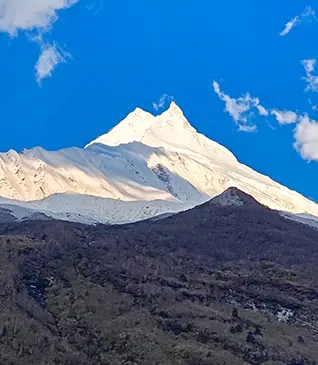If you have been planning to trek an iconic Himalayan destination for the first time, Kedarkantha perfectly fits the bill. It’s an excellent trek for beginners and seasoned hikers alike due to its incredible landscapes and thrill-inducing adventure. Kedarkantha Trek is located in the embrace of the Garhwal Himalayas of Uttarkashi district in Uttarakhand. Perched at a height of 12,500 feet, it is a 6-day fun-fueled expedition that takes around 20 km to complete.
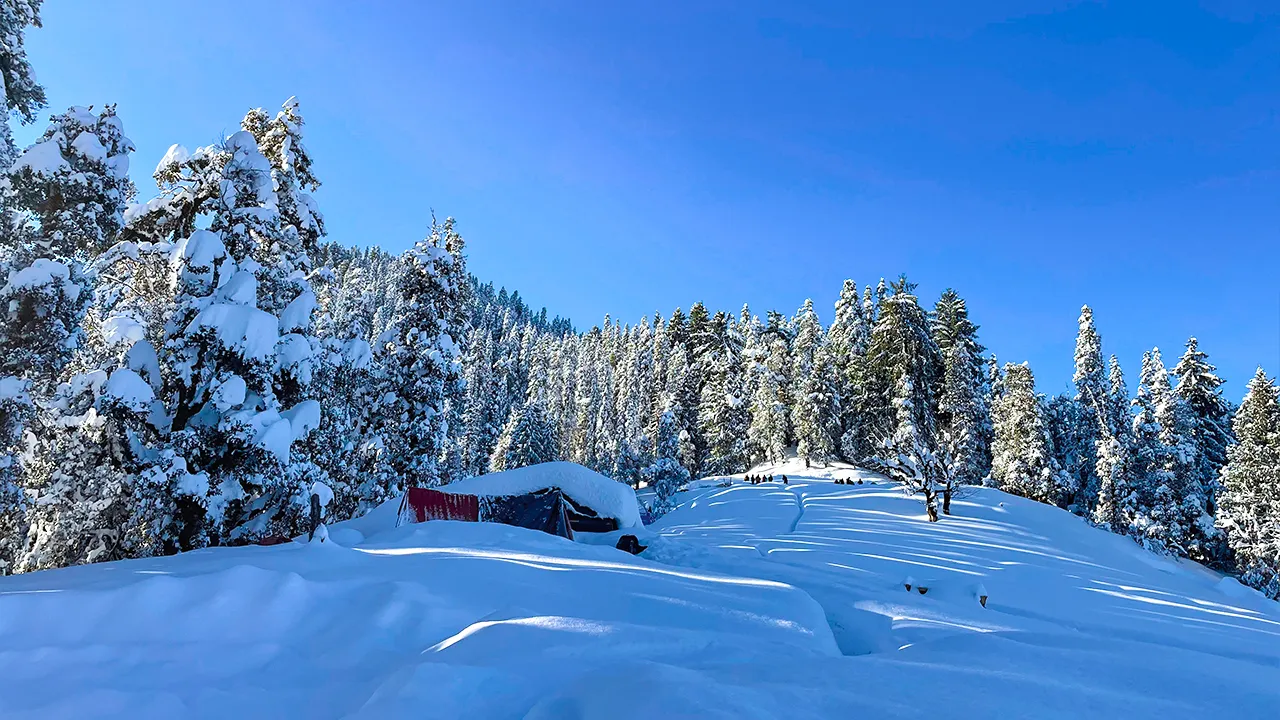
Why Kedarkantha is Perfect for Beginners
Kedarkantha is not just a picturesque trekking spot, but it is one of the superbly beginner-friendly treks out there. With not so steep and relaxed trails and breathtaking vistas throughout, the first-time trekkers find this hike easier and fulfilling. There is a solid reason why Kedarkantha has also been nicknamed as "Queen of Winter Treks".
To begin with, Kedarkantha’s views of stunning snow-covered trails start dominating the trek, especially in winters. Although it looks like a high-altitude snowy paradise, it is not impossibly difficult to reach. The trek starts from Sankri village that is again very easily accessible from nearby cities and towns. The gradual climb of this trek is normally satisfactorily managed by beginners also.
As you proceed to the destination, the Kedarkantha trek starts disclosing the actual reason why it’s one of the best. You will effortlessly enjoy lush green meadows along with their seasonal vibrance. That’s not all; the way forest trails are flanked by majestic oak, pine and cedar trees, you start appreciating your decision to come here. The pristine elegance of Juda Ka Talab lake is simply irresistible. It shines like turquoise-blue jewels in summers while freezes magically in winters. Finally, the 360o view of magnificent Himalayan peaks from Kedarkantha top is a stunner from every account. Spending some time at this spot makes you feel that the journey was worth it.
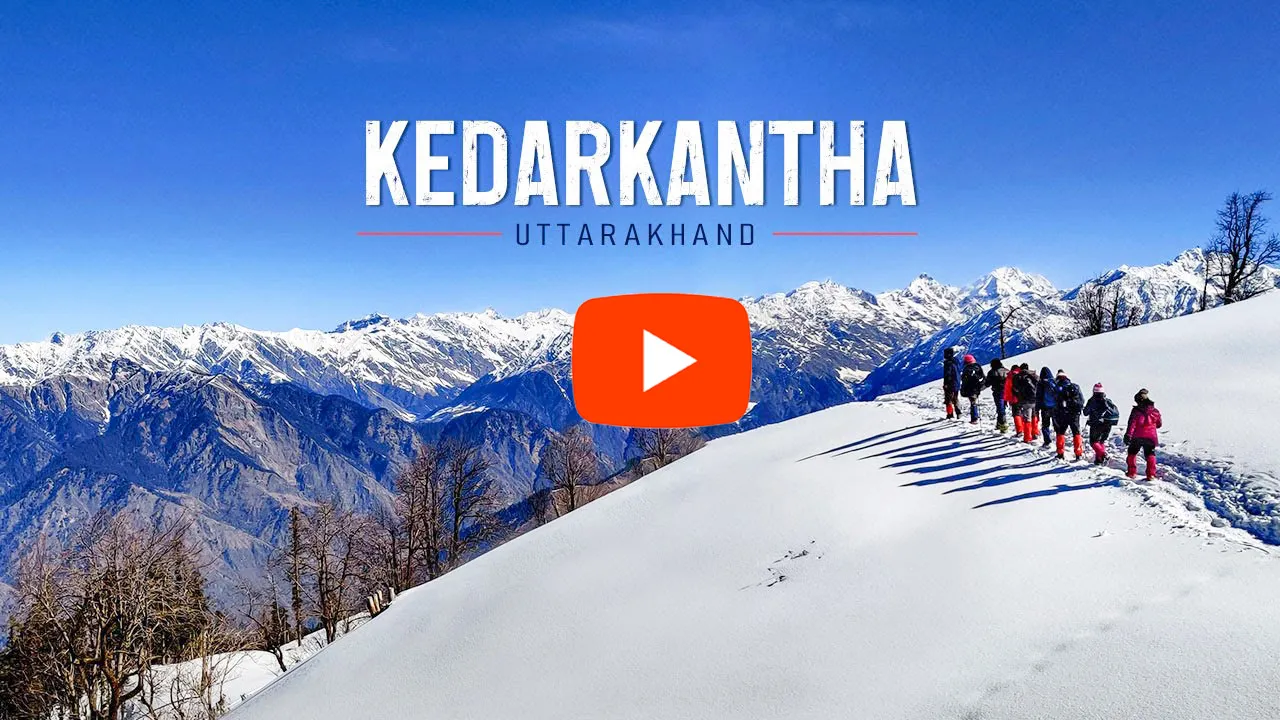
How to Reach the Kedarkantha Trek
After planning any trip, it’s always important to get a fair idea about the routes and modes of travelling. Kedarkantha Trek begins at Sankri village – the base camp, so you need to reach this venue safely. First you have to reach Dehradun in order to proceed towards the base camp.
- By Air: If you have to save your time and go to the trek hassle-free, travelling by flight is the best option for you. The nearest airport of Dehradun is Jolly Grant Airport, which is in the outskirts and around 30 km away from the city. Then book a cab/taxi from the airport to Prince Chowk.
- By Road: Travelling through the road gives you many options. You can catch a private bus or Volvo bus or Govt. bus from Delhi or Chandigarh and easily reach Dehradun after travelling for 6 or 7 hours.
- By Train: Another convenient route to Dehradun is by train. It’s up to you to choose which class of coach you are comfortable in. Here also, you will get options depending upon which region of India you are coming from.
Before availing any of the above options, and you are opting for Trek the Himalayas (TTH) pick-up service, try to make sure you arrive at Prince Chowk before 6:00 AM. After that, all your travel arrangements will be taken care of by TTH.
In case you are planning to reach the base camp on your own, you need to make sure to reach Dehradun as early as 5:00 AM. That’s because the departure time of Busses or Taxis from Dehradun to Sankri is early in the morning.
Detailed Kedarkantha Trek Itinerary (Day-Wise)
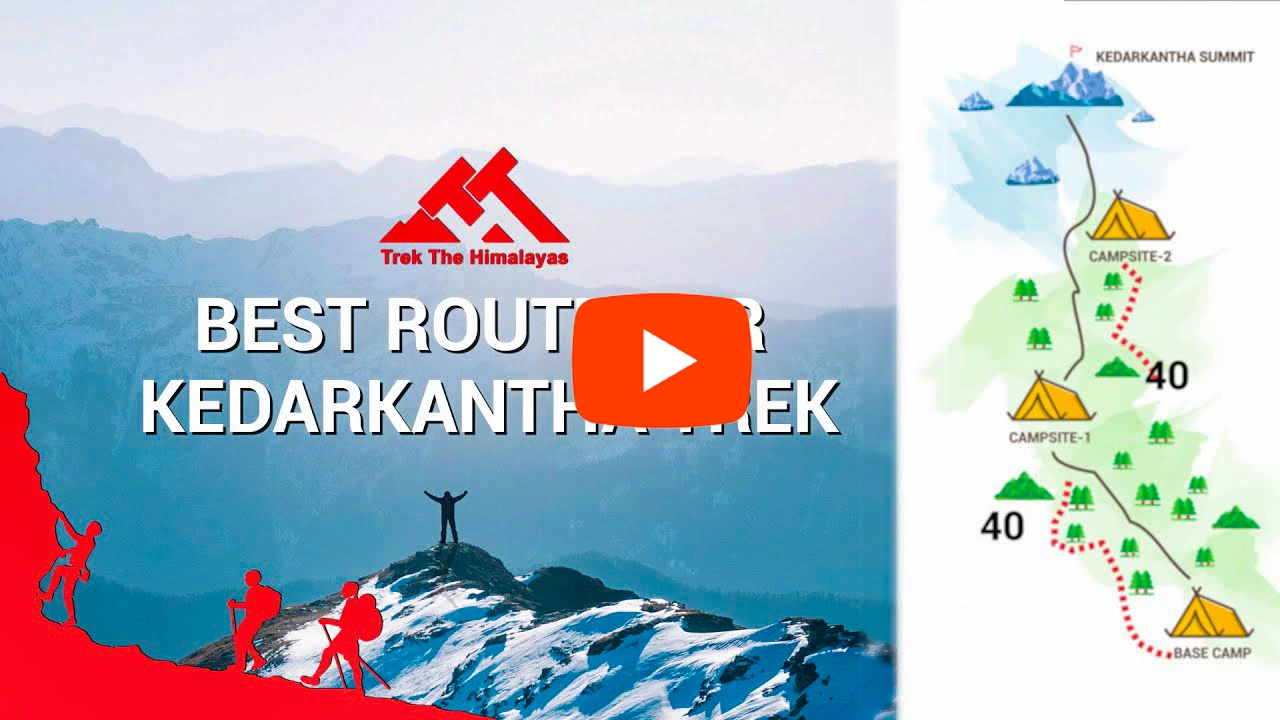
Day-1: Arrival at Sankri
Altitude: 1,950m/ 6,400 ft
Drive Distance: 220 km |10 hours approximately
The journey begins from Dehradun to Sankri village at 6 AM in the morning. The wonderful hill stations like Mussoorie, Mori, Naitwar make the entire route extremely scenic. You will particularly enjoy the stretch through Govind National Park, which is famous for its rich biodiversity. Sankri village itself is a very beautiful spot for relaxing and evening hangouts.
Day-2: Sankri to Juda-ka-Talab
Altitude: 2800 m/ 9100 ft
Trek Distance: 4-5 km | 5 hours approximately
The actual trekking begins from Sankri on day-2, which is a moderate 4 to 5 km walk to Juda Ka Talab. It’s a beautiful, crystal-clear alpine lake in the Himalayas. Just after leaving the base camp, you will begin enjoying your hike through the dense forest of oak, pine, maple, and rhododendron trees. Here on this stretch, commonly seen animals are Himalayan Langoors and Himalayan goats. The lake looks like a reflecting mirror in summers, whereas magically freezes in winters. You will camp here for the night and experience the beauty of the place. Savour your evening under the starry night.
Day-3: Juda-ka-Talab to Kedarkantha Base
Altitude: 3100 m/ 10,100 ft
Trek Distance: 4 km | 2.5 hours approximately
After a good, healthy breakfast at the beautiful sunrise by the lake, it’s time to embark on the third day’s journey. This is a 4 km hike to Kedarkantha base camp that is located at 10100 feet. The trail is normally marked well that goes winding along the forest areas. Just as you emerge from the forest cover, you are introduced to expansive stunning meadows. Kedarkantha base camp is an incredibly beautiful place that offers a serene environment and amazing mountain views. After reaching and refreshing at the campsite, it’s time to explore this place and have fun.
Day-4: Kedarkantha base to Kedarkantha peak, Descend to Hargaon camp
Altitude:
Peak - 3,800 m/ 12,500 ft
Hargaon - 2,700 m/ 8,900 ft
Trek Distance: 6-7 km | 7 hrs approximately
On the morning of day-4, you will leave for Kedarkantha Summit after having breakfast. Situated at a height of 12500 ft, the summit is breathtakingly beautiful by offering a clear view of peaks, including Swargarohini, Bandarpoonch, and Black Peak. The trek of the fourth day includes a climb to Kedarkantha Top and descent to the Hargaon Camp. The climb is a bit difficult and exhausting, but the view from the top completely makes up for it. The beautiful sunset at this summit is worth cherishing for a lifetime. You will also get an opportunity to visit temples of Shiva, Goddess Parvati, and Lord Ganesha at this place. Finally, descending to Hargaon in the evening is the end of trekking day-4. You will set your camps and stay here for the night.
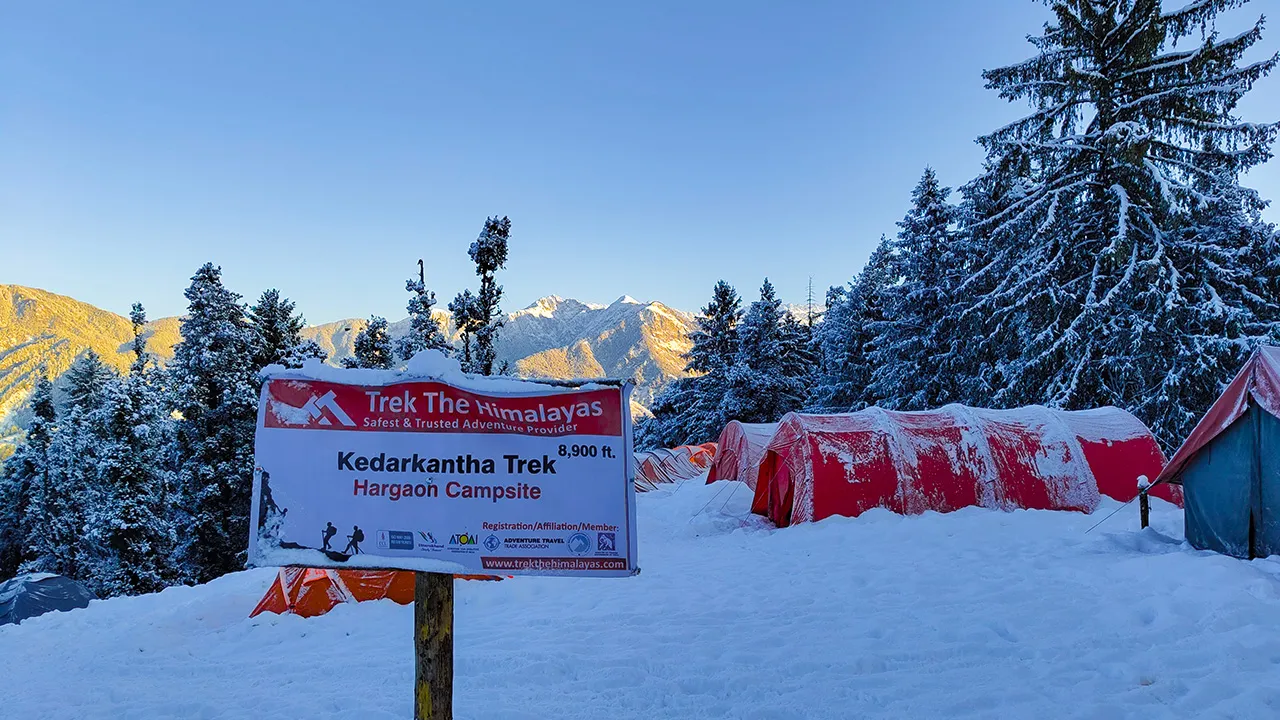
Day-5: Hargaon camp to Sankri
Altitude: 1950 m/ 6400 ft
Trek Distance: 4 km | 3-4 hours approximately
Day-5 is the final day of trekking, where you are going to descend 4km from Hargaon to Sankri village. It’s an overwhelming drop from 8900 ft. to 6400 ft. While going back to Sankri through forests, you will get a chance to see other trekking destinations such as Har Ki Dun. This final journey is relaxing and enjoyable, too. On this final day, you will get another opportunity to explore the beautiful Sankri village. It has a few shops that sell unique handicrafts and decorative items. These are good pieces for souvenirs. You can also come face to face with their local traditions and customs.
Day-6: Departure day (Sankri to Dehradun)
Drive Distance: 220 km | 10 hours approx
Day-6 is the last day of the trip. You will return to Dehradun with beautiful memories, of course! After the breakfast followed by early checkout, get ready for a long journey back to Dehradun.
Best Time to Visit Kedarkantha (Season-wise Guide)
Kedarkantha Trek’s uniqueness is the unmatched experience it offers across all the seasons. Every season has its own way of captivating you. Here is the season-wise relevance of this trek:
Winter Season
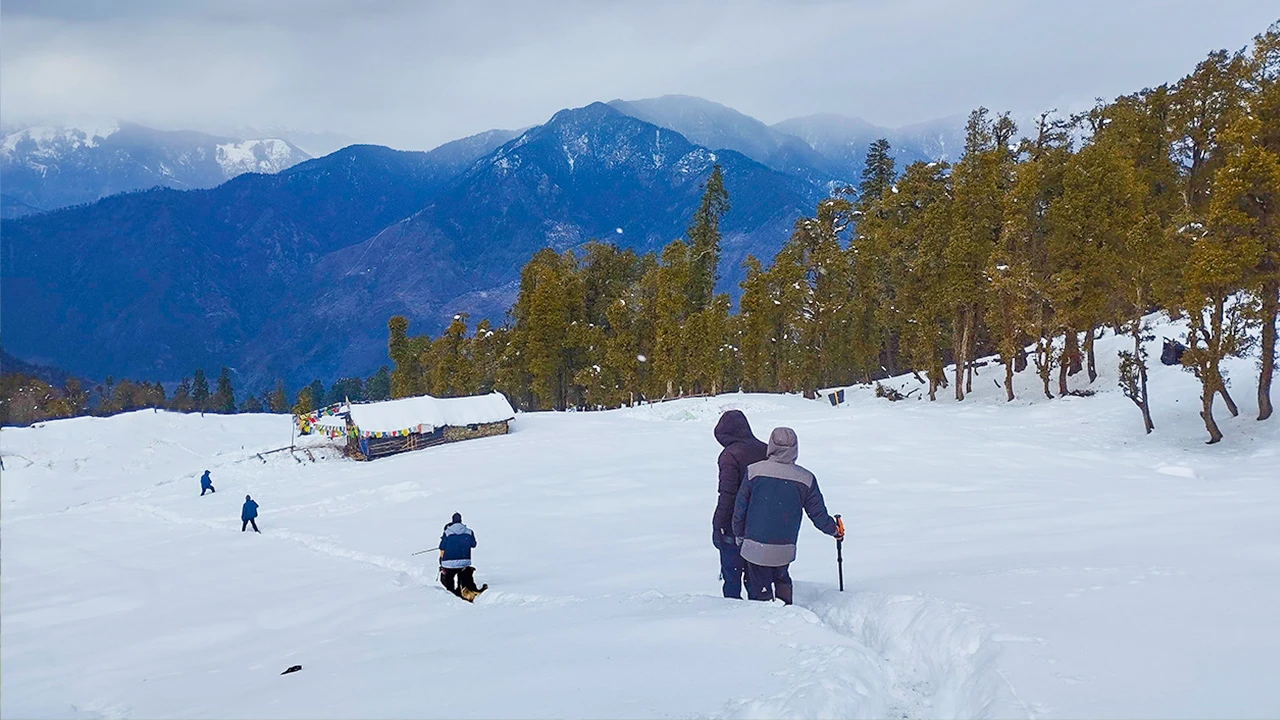
The winter season brings breathtaking beauty in the form of snowy landscapes. The near-perfect magic of winters is visible by snow-covered forests as you traverse the trail along them. The path through the dense oak and pine trees offer you a mind-blowing experience. As you emerge out from these forest covers, you are welcomed by beautiful expansive meadows, while the trail keeps you thrilled every instant.
While on the trek you will be particularly mesmerized by enchanting campsites. The incredible camping experience you get here is simply unforgettable for a long time to come. The frozen Juda Ka Talab clearly seems to have an undeniable charm that lures you away. The panoramic view of the Himalayas from the summit will awestruck you beyond your expectations.
Spring Season
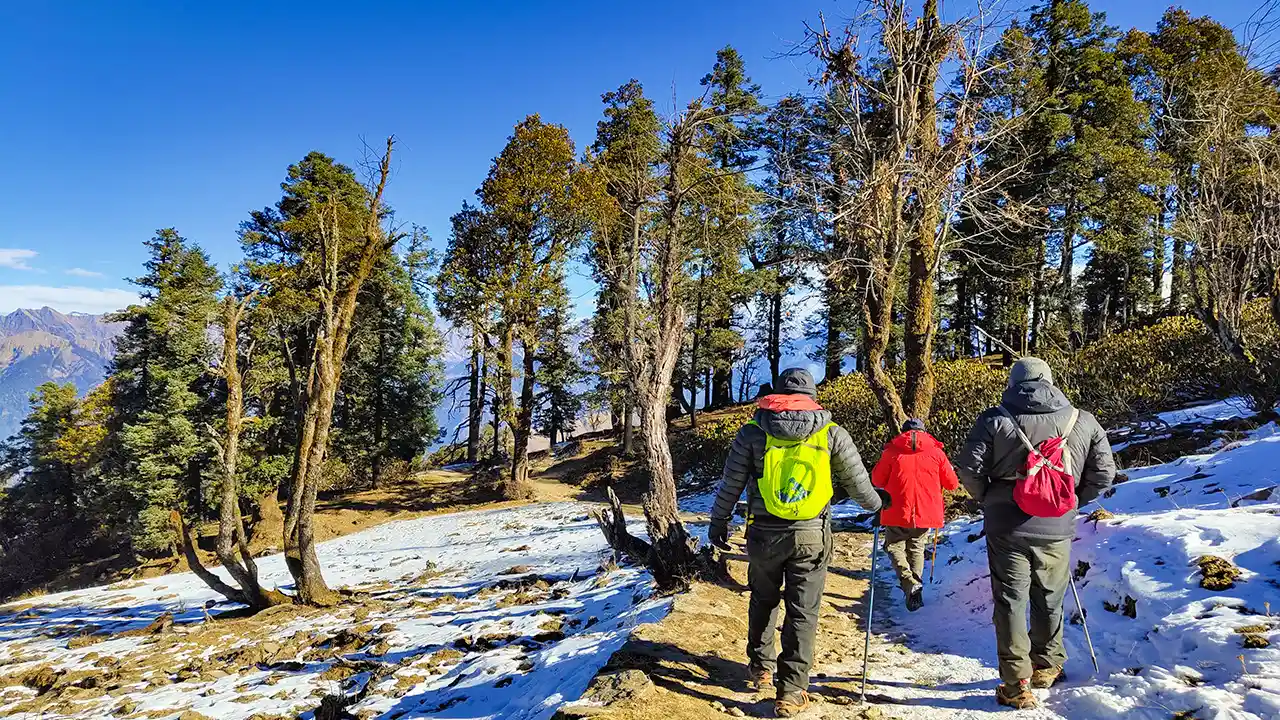
March and April are the prime months of spring. The season at this phase transitions into vibrant colors and bright sunlight all around you. The weather is more cheerful and the daytime temperature is quite pleasant to trek. After melting of the snow, the surrounding is pronounced by an embrace of greenery – a visual treat to your eyes.
Forests and meadows are turned completely lush green now, thereby making them breathtakingly attractive. While there are some remains of snow in higher altitudes, the trails are still well-marked. The most alluring attribute of spring is the way forests are transformed so beautifully by rhododendron flowers. They look like a beautiful garden of red and pink hues. Spring makes Kedarkantha Trek come alive by its rich species of flora and fauna. If you are lucky, this region of Govind Wildlife Sanctuary offers you a chance to see snow leopard, Himalayan black bear, musk deer, and Himalayan Monal.
Summer Season
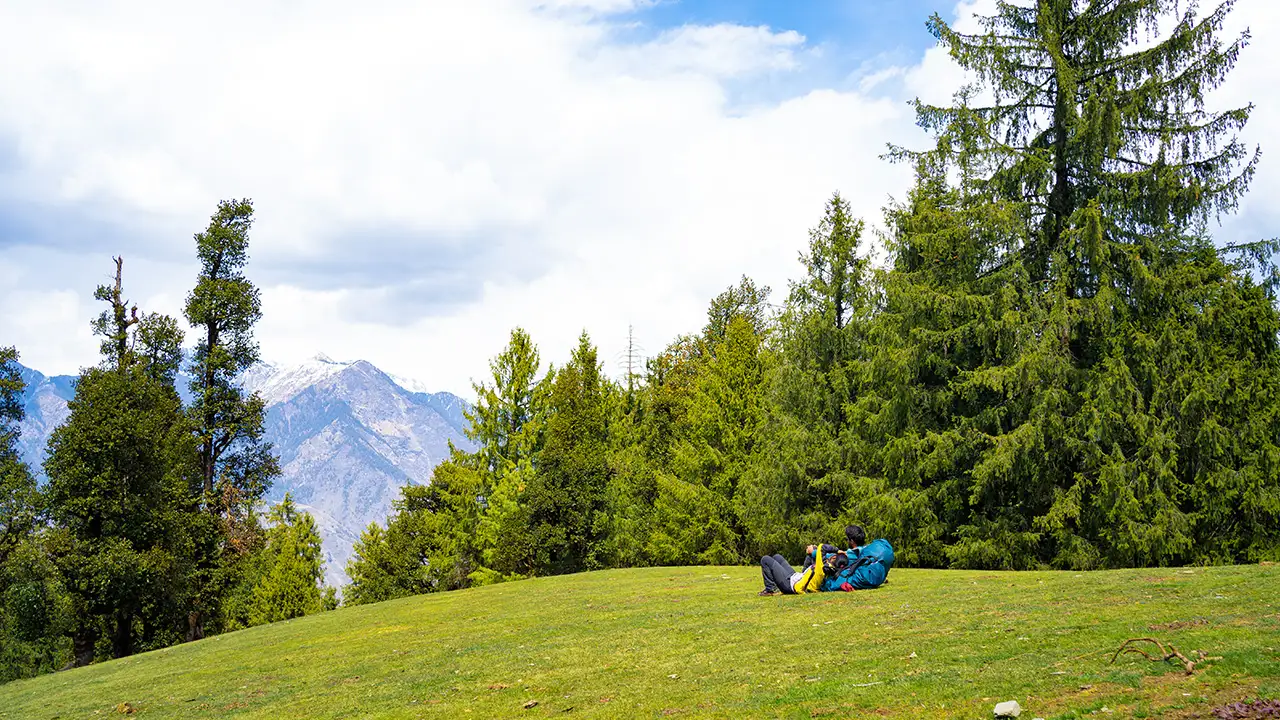
The summer season in this part of the region constitutes the months May and June. This is the time when the trek turns into a perfect paradise for beginners because of extremely stunning trails and a comfortable hike. The lush green landscapes and beautifully blooming wildflowers along with warm weather conditions mark the arrival of the season. The Juda Ka Talab becomes crystal clear like a mirror and the campsites on its shore give you a mesmerizing experience.
Generally the trails are clear and safer at this time of the year with fewer crowds than winters. This means Kedarkantha in summer is a cool trek for those who need peace and solitude. Moreover, the 360-degree view of the Himalayan range is absolutely incredible to watch. The prominent peaks that are visible from the top are – Swargarohini, Bandarpunch, Black Peak, and Draupadi ka Danda 2.
Autumn Season
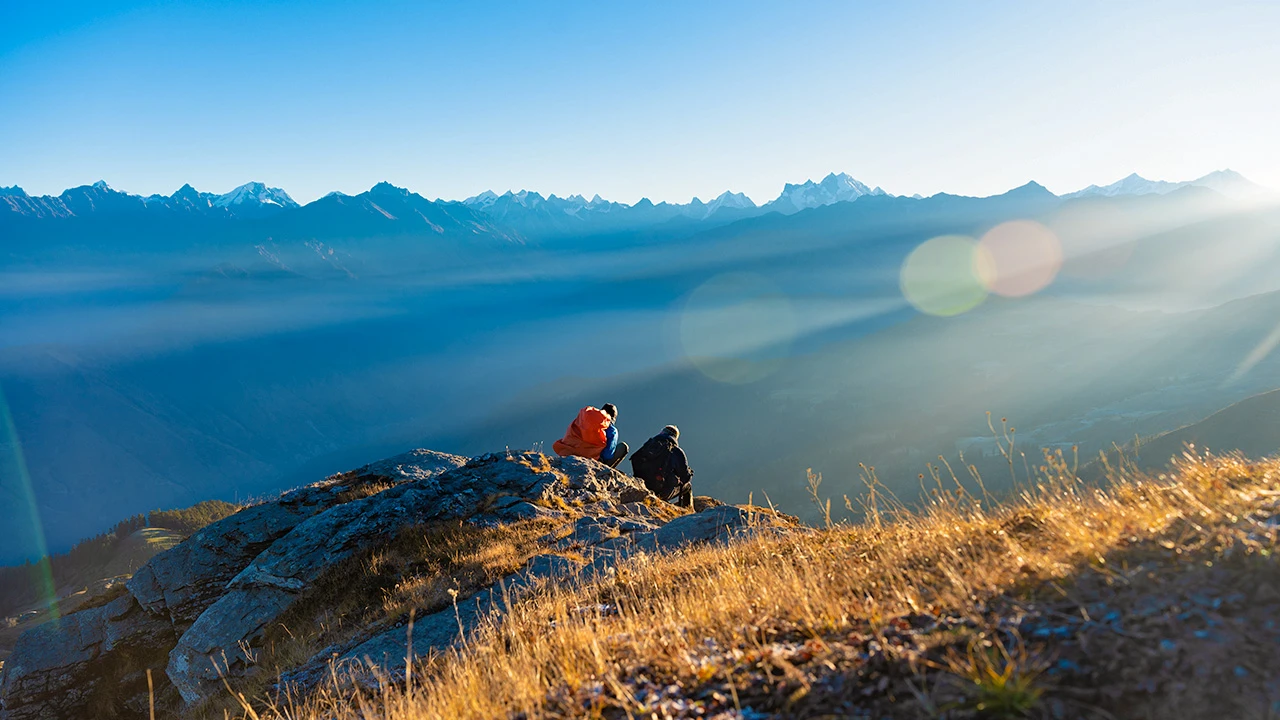
Autumn season is also regarded as one of the best times to go to the Kedarkantha trek. Autumn typically spans from September to November and is characterized by pleasant weather and clear skies. Also known as fall season, autumn makes trees shed their leaves while certain trees acquire yellow, red and brown colors. As a result, the forest covers look extremely vibrant and surreal. As the season progresses after the monsoons, the visibility increases, offering an excellent view of mountains.
The classic autumn visuals are definitely a photographer’s dream to capture. There are several occasions when you feel to be at the right place at the right time. So these are the perfect moments for you to capture stunning pictures of nature. The vistas of the mountain peaks are best seen from the Kedarkantha top. This is the place when you are surrounded by towering summits stretched endlessly. That would be a true feeling of sitting in the lap of mighty Himalayas.
If you want to get detailed information about the best time to visit Kedarkantha Trek, just click on this link and plan your next trip accordingly.
What to Pack for the Kedarkantha Trek
Before heading to your long awaited trip, you must have a complete knowledge of essential things to pack. Even before that, you should know how the weather and temperatures behave in different seasons in Kedarkantha trek. So, as a baseline tip to remember, the temperature here varies between -5o C to 15o C. That means you need to have enough warm clothing irrespective of the season. Here is the list of essentials that you must carry for Kedarkantha Trek:
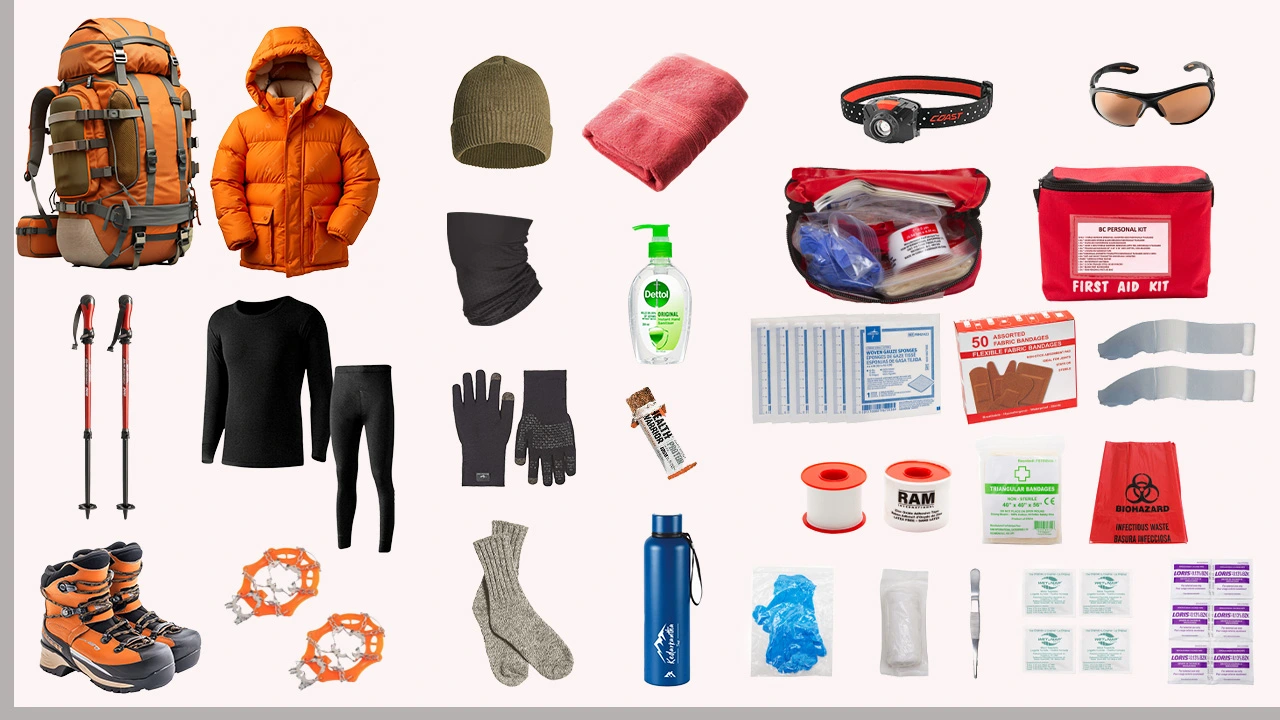
- Documents
- Basic Gear
- Backpack with rain cover that is capable of carrying 50 – 60 ltr comfortably.
- Strong trekking poles to tread comfortably. (At least one is highly advisable).
- Water bottles with a capacity of 3-4 liters.
- Energy bars, dry fruits, and electrolytes.
- Personal first-aid kit.
- Plastic bags for waste management.
- Clothing
- Warm insulated jackets to shield you from elements.
- 2-3 pairs of track pants.
- Thermals (upper and lower)
- Wind-stopper/ fleece jacket and wind-stopper /fleece pants.
- Layers of warm clothing with quick-dry t-shirts.
- Waterproof and woolen gloves.
- Waterproof jacket and pants.
- Head Gears
- Headlamp
- Woolen cap or beanie
- Sunglasses
- Woolen buff/neck gaiters
- Balaclava
- Foot Gears
- Trekking shoes (water resistant, high ankle, good grip).
- Socks (woolen-3 pairs, regular-4 pairs)
- Gaiters
- Micro spikes
- Personal Utilities
- Sunscreen and moisturizer
- Lip balm
- Tooth brush and tooth paste
- Hand sanitizers
- Antibacterial powder and foot powder
- Quick dry towel
It is necessary to bring all the required documents with you. For ID proof, carry any one of these: Adhar Card, Voter ID, and Driver’s License. For foreign nationals, it is mandatory to carry Passport and Visa. Finally, a medical certificate with a declaration that you are fit for trekking.
“Pro Tip: Clothing has two aspects – at campsites and while trekking
While trekking, your body generates heat and sweat. So you should wear two thin layers – one quick-dry inner and a t-shirt outside. Mornings are cold so wear jackets but as the sun goes up and you start walking, you feel hot. When sweating profusely, do not remove your layers instantly, rather loosen them and let the sweat dry.
Next, nights are chilling as temperature drops dramatically. So layering is the key. Ideally, you should go for two layers of thermals, two layers of fleece and one jacket outside. You can keep a backup layer just in case. For the lower body, use three layers – two thermals and one track pants. Avoid jeans!”
Fitness & Preparation Tips for Beginners
Take it as a general rule of thumb – good physical fitness and safety precautions are extremely crucial if you want to fully enjoy your trip. For that, you have to thoroughly work on these two parameters well before setting your foot out. This preparation will enable you to maximize your enjoyment.
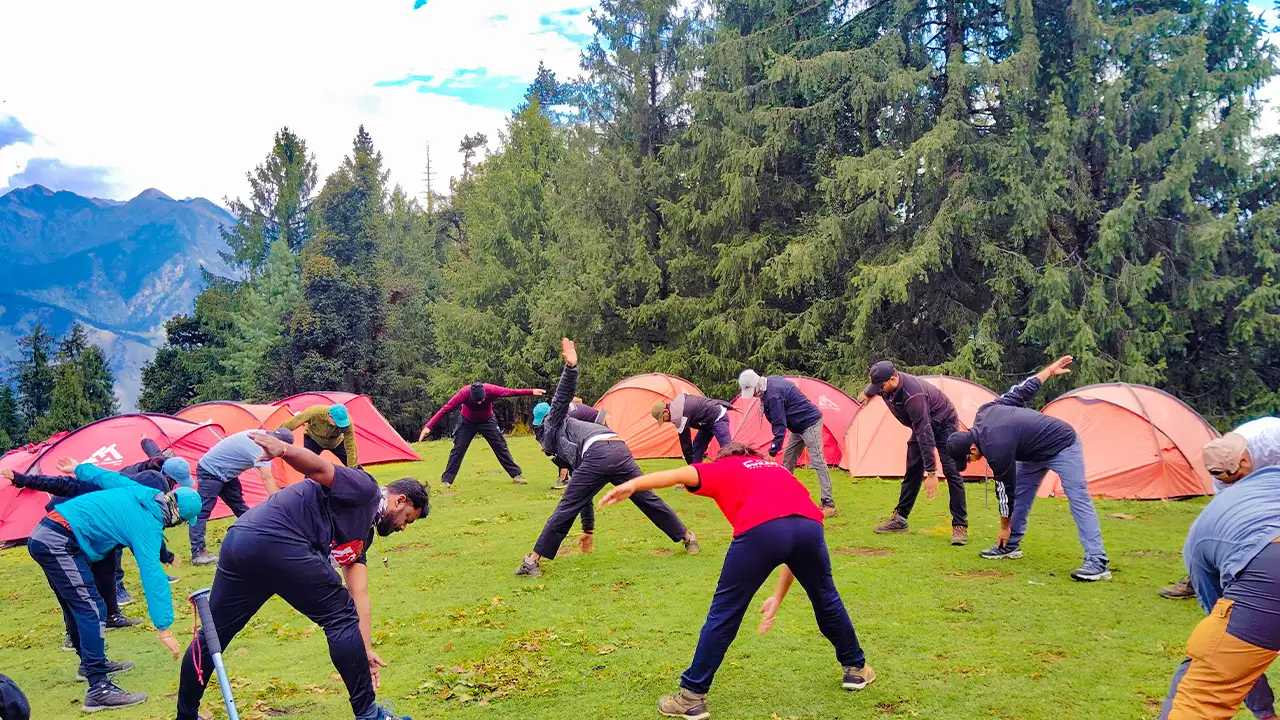
Preparation for your fitness regimen should be done in three aspects –
- Cardiovascular and Endurance Training
- Start workouts like jogging, swimming, or cycling. It will help you increase your stamina and heart health.
- Start running with shorter sprints, then gradually increase distance and speed.
- Engage in stair climbing activity to prepare for summit climb. The duration should vary from 30 to 45 minutes.
- Practice walking with loads on your back and gradually increase the weight from 8 Kg to 10 Kg.
- Strength Training
- Engage in leg workouts like squats and lunges to strengthen your leg muscles. It will be extremely helpful for the climb.
- A healthy core is the key to a comfortable walk. So engage in exercises like planks and bridges to strengthen your core
- Increase your flexibility with stretching workouts. Focus on your hands, legs and shoulders.
- Practice meditation and breathing exercises because being mentally fit is also necessary.
- On-trek Preparation
- Make sure to arrive at the base camp one day earlier to be able to adjust to the conditions. Try to take light walks around the area up and down in order to acclimatize to the altitude.
- Stay hydrated throughout even before the trek, and increase your water intake. Try to drink at least 3 liters of water per day. Water is a very important factor to stop altitude sickness from kicking in.
- Your diet should be healthy and balanced. Breakfast should be rich in proteins, carbs and lots of veggies. Keep energy bars, protein bars and dry fruits for the trek. Lunch and dinner should be high in carbohydrates.
- While on the trek, take care of your feet as much as possible because they are physically used more than any other body part. Wear quality socks, keep your feet dry with foot powder, and always prevent the moisture from collecting. Make sure your shoes are comfortable and properly fit. This is highly important to prevent blisters.
Even if you have fully prepared at home, taking care of your body on the trek is equally crucial. It will reduce any chances of ruining your trip.
If you want to get detailed information about the Tips and Tricks for a First-Time Trekker, just click on this link and plan your next trip accordingly.
Why You should do Responsible Trekking in Kedarkantha
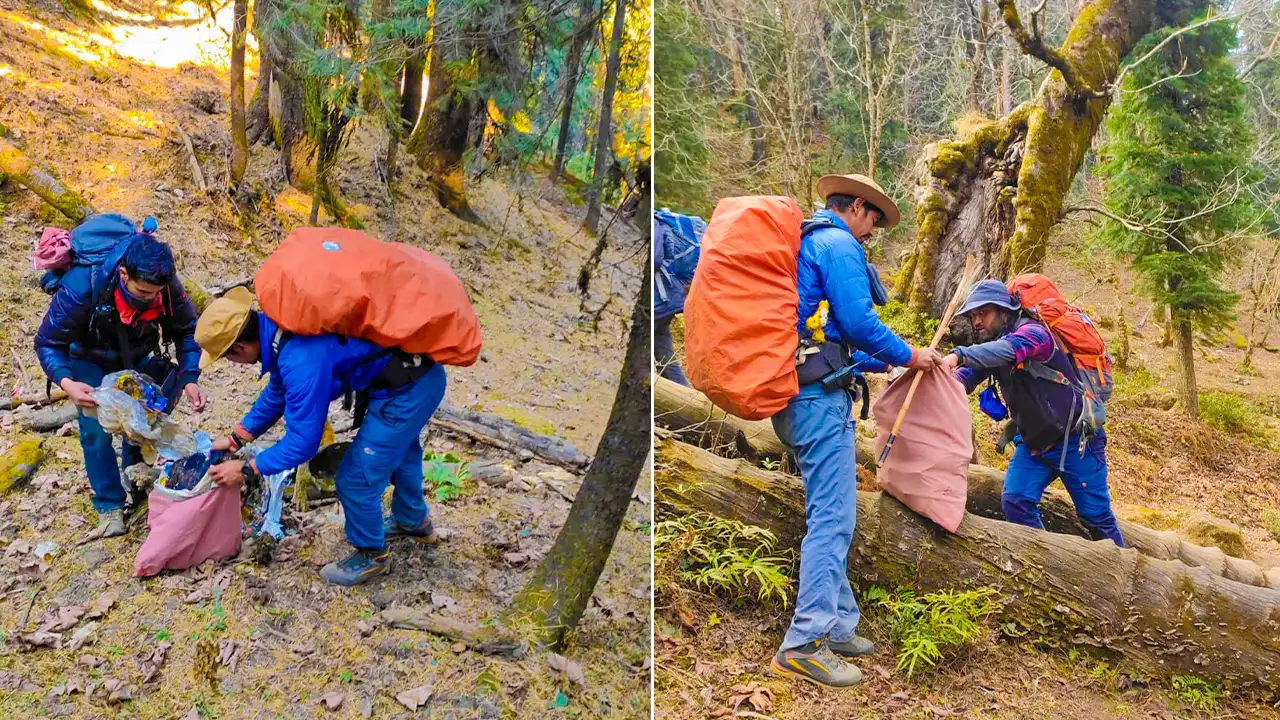
The need for responsible trekking has never been so grave than ever before. The number of tourists flocking to the Himalayas is only growing year after year. That means today, there is an increased burden on the ecology, resources, and native culture of this region. Kedarkantha Trek is among those Himalayan destinations that receive the most number of trekkers. Particularly, winters see a considerable jump in their numbers. Thus following responsible tourism practices is not an option here – it's a must!
You need to be aware of the overall impacts of trekking activities. You should know what other trekkers are doing on these trails and what the consequences of their activities are. Your actions can have profound impacts on the environment, wildlife, society, economy, and local traditions. There are practices that boost cleanliness, reduce carbon footprint, support local economy, and sustain conservation. You not only should follow these practices but encourage other trekkers to engage or follow them.
Many people just casually and mindlessly throw wastes, wrappers, food items, polythene, and garbage on or around trails. These things are hazardous for the ecology. For example, non-biodegradables such as polythene break into tiny fragments and seep into lakes, rivers and streams. These pieces when consumed by animals can be fatal in the long run. Chemical contamination of food and water is injurious to the health of many animals. So you need to strictly refrain from such activities to begin with. Another very important thing is don’t touch or feed wild animals. This is for your own safety as well as theirs.
Trek The Himalayas is fully aware about and committed to sustainable tourism practices. To reiterate our commitment, we at TTH have initiated a campaign that boosts cleanliness-drive in the Himalayan region. This campaign’s name is Heal Himala under which people are encouraged to collect wastes and garbage on the treks and deposit them at our base camps.
Why Choose “Trek The Himalayas” for Kedarkantha
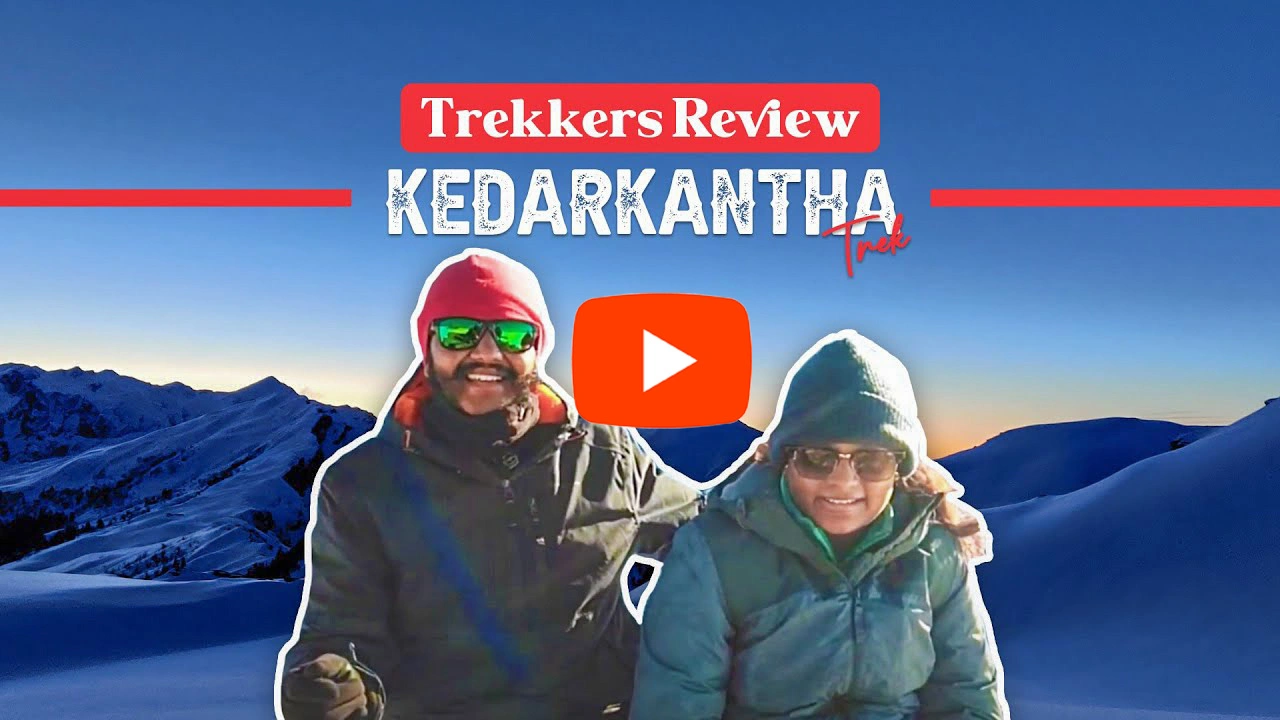
Before choosing any trekking company for your next Himalayan trip, there are some non-negotiables that you must emphasize to factor in. For example, food, safety and convenience are of paramount importance when you are out there in the wilderness.
So any company you are choosing, first dig deep into their best practices and make sure they have completed the following checklist:
- Are additional oxygen cylinders available or not? or what is the oxygen cylinder ratio?
- Stretcher availability
- Rescue team
- Medical facility at base camp
- Daily monitoring of oxygen saturation and pulse readings.
- Equipped with radios/ Satellite phones for communication
- Trained mountain staff availability
- Special medical kits for high-altitude treks
- Microspikes are provided for all snow treks or no
- Experienced trek leaders' availability
- The technical team is present on all snowy slopes.
We at Trek The Himalayas have been consistently delivering a great service to our customers since inception. We believe in utilizing the safest equipment and logistics along with the most experienced crews.
Here is what makes us stand out from the rest:
- Group Experience
- A Skilled and Certified Team
- High-Quality Equipment and Safety Measures
- Food and Accommodation
- Expert Guidance and Personalized Assistance
- Scenic and Well-Prepared Routes with Proper Itineraries
- Trusted by Prestigious Organizations
- Price and Inclusions
- Reliability and Reputation
TTH encourages better group dynamics. Be it beginners, intermediate or experienced hikers, everyone experiences a steady pacing on every trek. We believe in establishing a cordial relationship and better camaraderie.
The trek leaders working for TTH are highly skilled and qualified, which is reflected through their resume. Their certifications include Basic Mountaineering Course (BMC), Advanced Mountaineering Course (AMC) and Wilderness First Responder (WFR). These certifications means our team is fully equipped to handle emergencies and manage health concerns in remote, high-altitude areas. Also, our trek leaders are preferably native to the Himalayan Mountains with years of experience. They understand the terrain inside out and have a complete idea about various routes, weather patterns, flora, fauna, and culture. On top of these qualifications, TTH conducts a yearly safety course to make sure its team is up-to-date on the latest safety procedures.
Safety is of utmost importance in high-altitude mountainous regions, which is why TTH leaves no stone unturned to employ the best safety measures. As per the trek’s route and season, we provide essential safety tools like walkie-talkies, ropes, harnesses, oxygen cylinders and gaiters. These tools prove extremely handy to navigate difficult terrains and tackle unexpected challenges, such as slippery trails and river crossings. Our consistent use of high-quality equipment ensures that our trekkers feel safe and supported throughout the trip. We also have a strong local network of guides that proves extremely helpful in adverse situations.
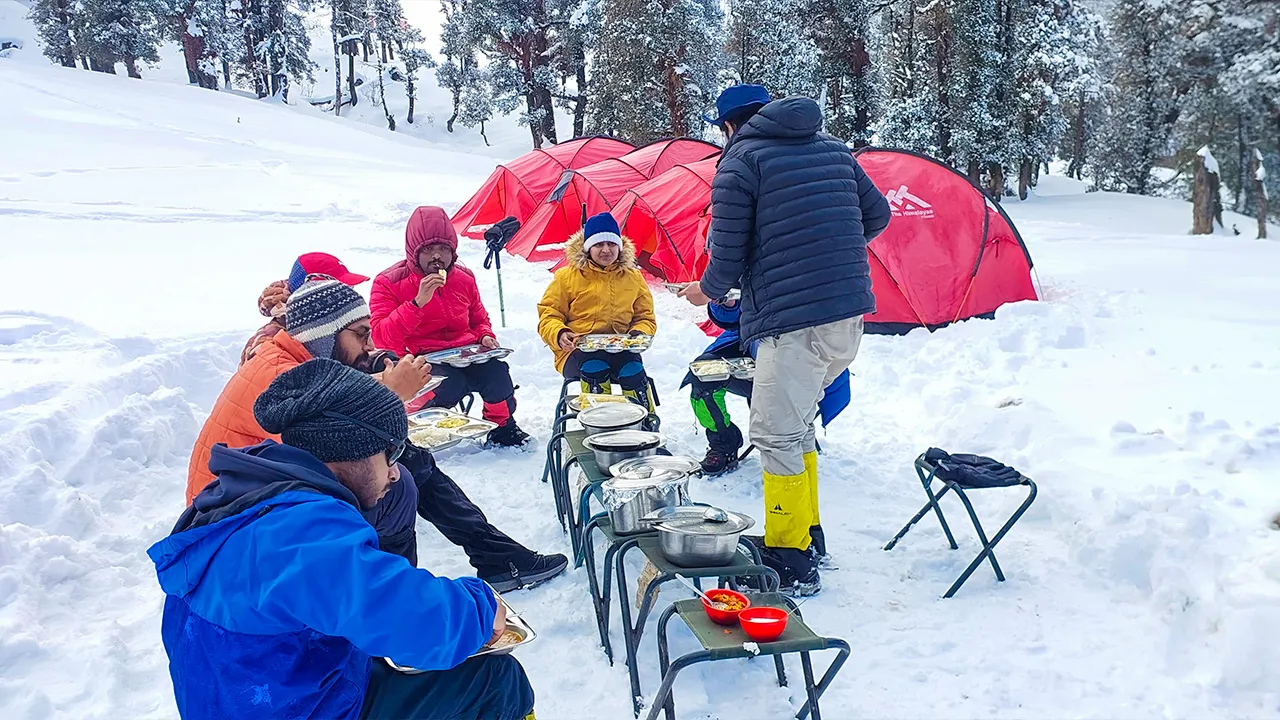
Nutrition is the key element of high-altitude trekking. Trek The Himalayas is extremely particular about the food being served on the treks. We provide a great camping experience with systematic and balanced diet meals. Not only that, our menu has a very extensive variety, such as local or home-style foods. Our expert chefs and cooks never fail to maintain good hygiene and hearty meals.
Our menus and dishes are designed to sustain energy levels and trekkers’ health. The meals are served in such a way that it fulfills dietary needs while ensuring trekkers that they can enjoy the trip without any health issues. We are well aware of the fact that some people are absolutely pure vegetarian. So keeping it in mind, we also provide Jain Food on request.
We specially focus on hygiene with comfort in our camps. In other words, TTH has dedicated kitchen spaces and comfortable dining tents. At the base camp of every trek, we accommodate our trekkers in guest houses that have attached bathrooms along with geysers.
TTH has a dedicated team of expert guides and experienced staff. Our trek leaders come from a highly standardized training program. They are proficient in safety and acclimatization procedures. We have long-serving local guides and support staff, and they are more capable of better decision making.
We here at TTH fully understand that every trekker has unique needs, points of views and expectations. That is why we have a dedicated team of experts that provide personalized assistance and better guidance. Our trekkers can go to any length in assisting trekkers with pre-trek planning, choosing right treks, and acclimatization tips. They are responsive, experienced, and provide trekkers with tailored advice and recommendations.
Trek leaders at TTH diligently and thoughtfully design trekking routes, resulting in more scenic beauty, more fun and adventure. With experience, care and calculation, every campsite is chosen so that trekkers maximize their enjoyment. These well-laid routes ensure spectacular views, mesmerizing locations, and comfortable hiking. They make sure that no attractive place is left unexplored, rather help experience the profound serenity of the Himalayas. TTH has well-defined contingency plans and prominent altitude-gain guidelines. Our itineraries have more options for slower or faster pacing. Moreover, we provide additional acclimatization days on request (depending upon trek difficulty and health issues).
It’s a matter of extreme pride for Trek The Himalayas that it has earned the trust of some of India’s most esteemed institutions, including the Indian Navy and the Indian Army. These organizations value safety, precision, and reliability—qualities that are essential in high-stakes environments. The fact that they entrust their members’ training and recreation to TTH speaks volumes about the company’s operational standards, commitment to safety, and respect for the discipline required in mountainous adventures.
We strictly believe in transparent pricing with clearly mentioned inclusions and exclusions. On certain occasions we offer extras more flexibly.
Throughout its journey in the field of Trekking, Trek The Himalayas has never compromised with its credibility and reputation. Whether it’s the personalized attention to customers, quicker responsiveness of our staff, food and safety measures, or knowledgeable local guides, the overall experience that we provide is highly rated among our clients.
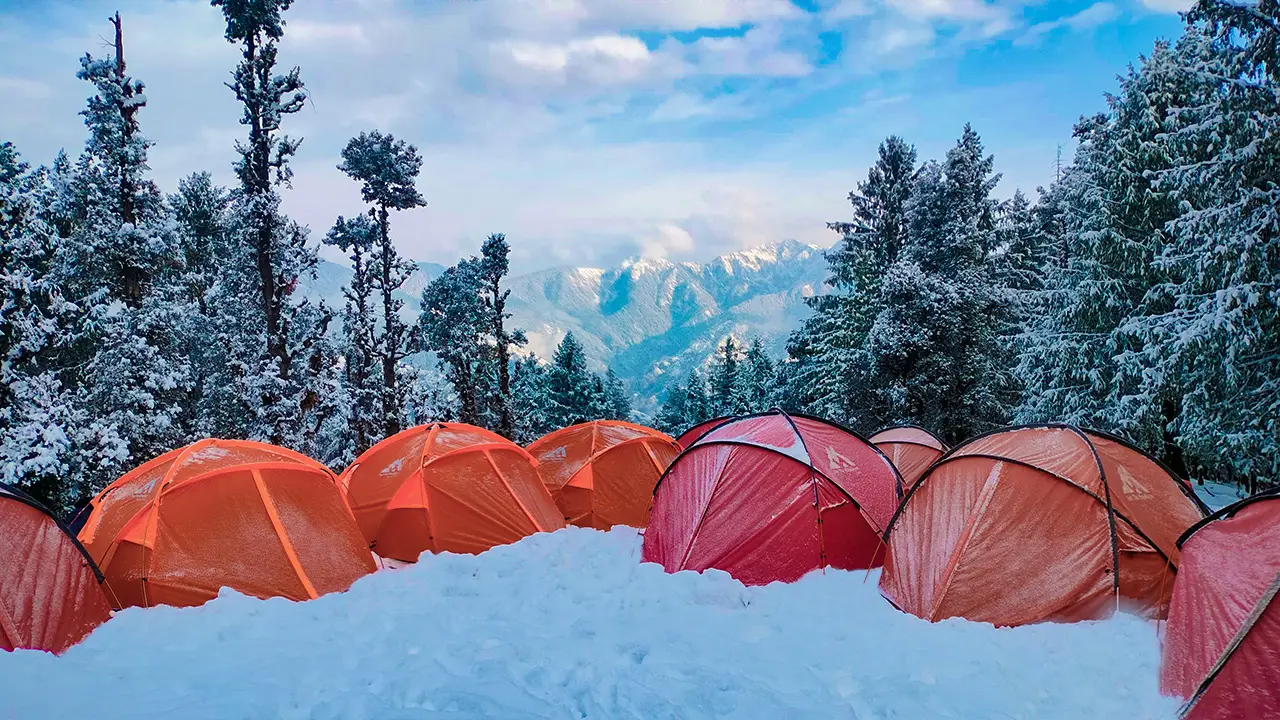
Conclusion
Kedarkantha Trek is a stunning Himalayan destination that is loved by beginners as well as seasoned trekkers. It is very popular for its easy trails, natural beauty and mesmerizing mountain views. This trek often stands out from the rest because it has unique offerings in different seasons.
Winters have beautiful snowy landscapes with snow-clad forest covers. Spring brings a colorful refreshing vibe with pleasant weather all around. Forests seem to come alive with enchanting rhododendron flowers. The summer season is warm, pleasant and comfortable to trek. This is the time when you witness the rich biodiversity of the region. Autumn, on the other hand, has cool, crisp air, clear skies, and vibrant colors in nature.
Irrespective of the weather and season, Kedarkantha Trek requires you to be physically and mentally fit. So if you want to enjoy your trip to the fullest, a few daily workouts prior to the trek will benefit you.
FAQs
1. What is special about the Kedarkantha Trek?
Kedarkantha Trek is one of the most visited Himalayan destinations because it offers a ton of natural wonders. Right from the start of the trek, the stunning forest trails will captivate you. Campsites at the Juda Ka Talab give you an amazing experience. After crossing the beautiful meadows, the views of the mountains become even more enchanting. Finally, the 360-degree view of the Himalayan range is breathtaking.
2. How difficult is the Kedarkantha Trek for a first timer?
The Kedarkantha Trek is a moderate level trek for a first timer. The first hike to Juda Ka Talab is the easiest of all. The final climb to the summit is a little difficult but equally rewarding.
3. What is the fitness required for Kedarkantha Trek?
As the Kedarkantha Trek is an easy to moderate hike, it can be done by almost all age group people barring the winters. The trail is well-marked and has very few steep climbs or descents. However, you still have to be in good shape in terms of fitness. For that, you can practice a brisk walk for 30 minutes per day.
4. What is the best time to do the Kedarkantha Trek?
Kedarkantha Trek is among those treks that are enjoyed throughout the year. But it becomes absolutely stunning in the winters as it receives a good amount of snowfall. The landscapes are seen transformed into wonderland and trekkers tend to enjoy it a lot more.
5. What is the temperature variation of Kedarkantha Trek?
Kedarkantha Trek is very cold in winters and pleasant in summer time. In summers, the temperature varies from 5-degree to 20-degree. In winters, it ranges from -15 degrees to 15 degrees.
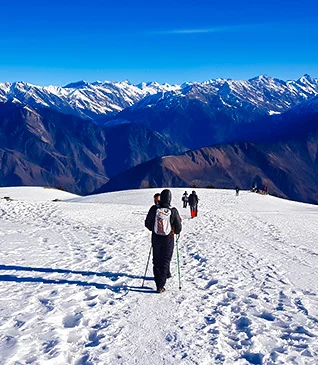
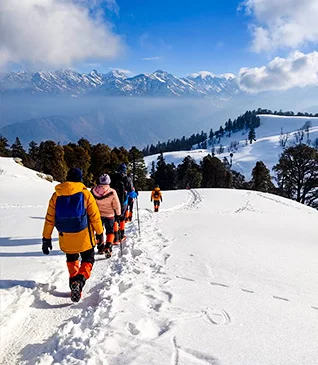
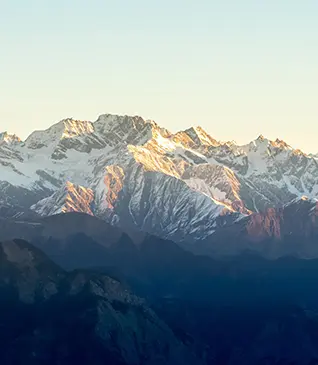
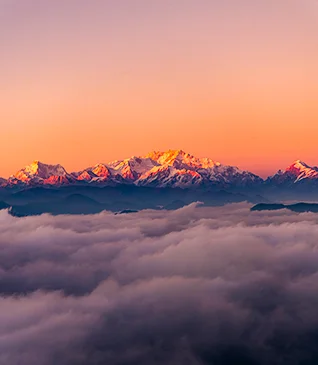
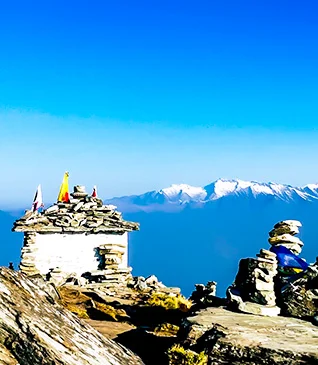
.webp)
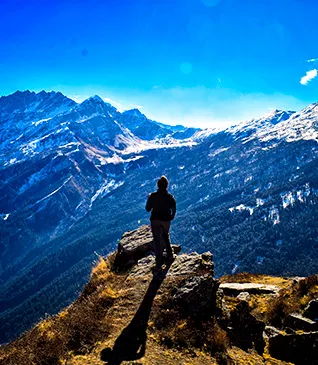
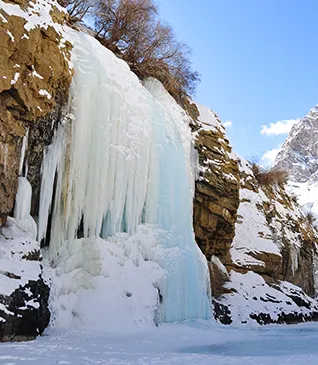
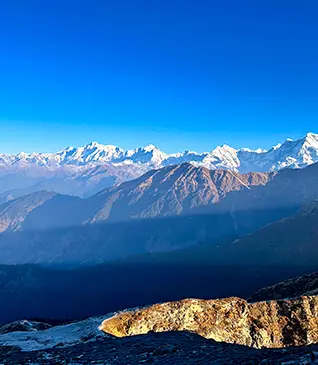
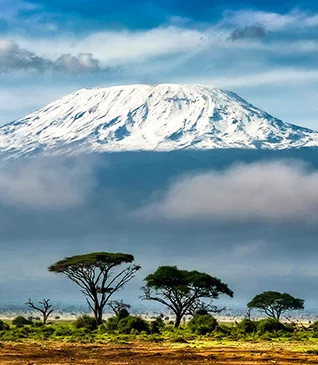
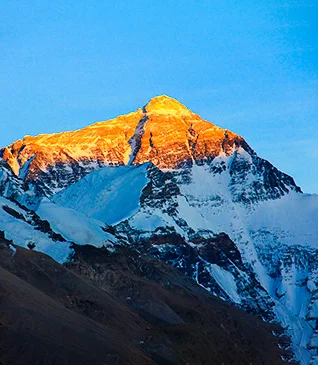
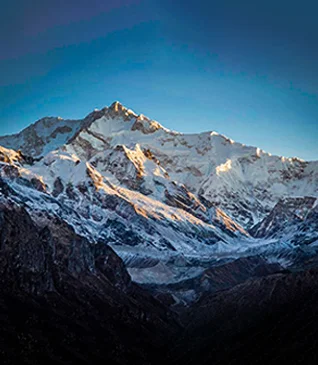
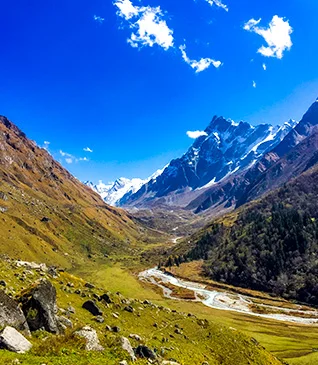
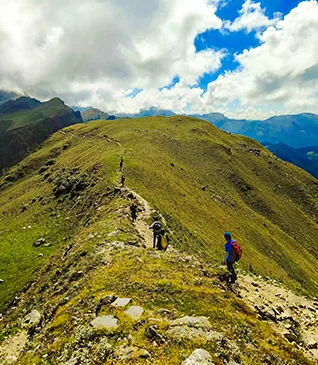
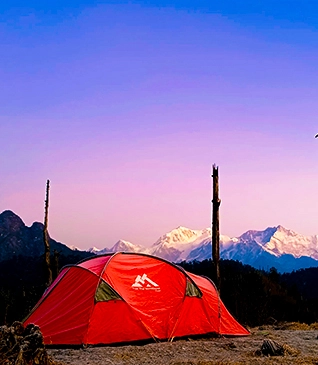
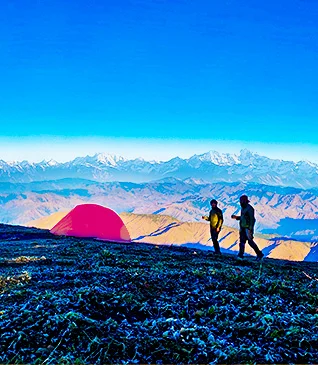
.webp)
